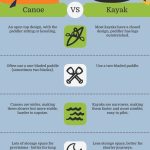Have you ever wondered about the difference between modeling and acting? If you’ve been curious, you’re not alone.
These two glamorous professions often seem similar, but they require different skills and offer distinct experiences. Whether you’re considering a career in either field or simply want to understand what sets them apart, you’ll find this exploration fascinating. Discover how modeling focuses on visual appeal while acting captures emotions and storytelling.
By the end of this article, you’ll have a clear picture of how these intriguing worlds differ. Ready to dive in and satisfy your curiosity? Let’s uncover what makes modeling and acting unique!

Modeling: A World Of Poses
Modeling is a captivating world full of poses and expressions. Models use their bodies and faces to create art. They tell stories without words. This art form demands precision and creativity. Models work in various settings, each with unique challenges and styles.
Runway Vs. Print Modeling
Runway modeling involves walking on a stage during fashion shows. Models showcase the latest designs from top designers. They must walk gracefully and maintain focus. Print modeling takes place in magazines and advertisements. It requires posing for still photos. Each style needs different skills and talents.
Skills And Techniques
Models learn how to pose and express emotions. They train in posture and movement. Confidence is key in this profession. They practice in front of mirrors and cameras. Models must adapt quickly to new styles and trends. Being versatile helps in landing more jobs.
Industry Standards And Requirements
The modeling industry has strict standards. Agencies look for specific height and body measurements. Models must maintain their appearance. Healthy lifestyle choices are crucial. Portfolios showcase their best work. Professionalism and punctuality are essential in this field.

Acting: The Art Of Performance
Acting is the art of bringing characters to life. It requires a deep understanding of human emotions. Actors dive into roles, exploring personalities and stories. This craft is about conveying feelings and connecting with audiences. It’s about captivating and engaging the viewer.
Theater Vs. Film Acting
Theater acting happens on a stage. It’s live, immediate, and raw. Actors perform in front of an audience, sharing the space. Film acting, on the other hand, is captured on camera. It involves multiple takes and angles. Theater demands projecting voice and movement for impact. Film focuses on subtlety and close-ups. Each medium has unique challenges. Both require strong presence and skill.
Emotional Range And Expression
Actors must master emotional range. They portray joy, sadness, anger, and more. This involves facial expressions, tone, and body language. A subtle change can convey deep emotions. Emotional authenticity keeps the audience engaged. It makes characters believable and relatable. This ability is crucial in both theater and film. It draws viewers into the story.
Training And Education
Training is essential for actors. Many start with drama classes. Workshops and rehearsals build skills. Actors learn techniques for voice and movement. Education helps in understanding scripts and characters. Some pursue formal degrees in acting. Continuous learning keeps actors sharp. Practice refines their craft, preparing them for varied roles.
Career Paths And Opportunities
Modeling focuses on visual representation, showcasing fashion and products. Acting involves performing roles in films, theater, or television. Both careers offer creative expression but differ in their skill sets and industry demands.
Embarking on a career in modeling or acting offers distinct paths filled with unique opportunities. Each profession has its own set of challenges and rewards, requiring specific skills and dedication. While both involve performing in front of an audience or camera, the journey to success can be quite different. Understanding these differences can help you make an informed decision if you’re considering either of these creative fields.Modeling Agencies And Contracts
In modeling, agencies play a pivotal role in shaping your career. They act as your representative, connecting you with brands and designers. Signing with a reputable agency can open doors to lucrative contracts and global exposure. Agencies often have specific criteria, focusing on your look, height, and body measurements. It’s crucial to find an agency that aligns with your personal brand and career goals. Contracts can vary widely, so always read the fine print before committing. Success in modeling often depends on your ability to adapt to diverse styles and maintain your physical appearance. But remember, it’s not just about looks; professionalism and punctuality can set you apart. Are you ready to maintain this level of discipline and dedication?Acting Auditions And Castings
In acting, your career path typically involves attending numerous auditions and castings. Unlike modeling, where agencies take the lead, actors often need to be more proactive in seeking opportunities. This can mean attending open calls, networking, and constantly honing your craft. Acting auditions require you to showcase your talent, versatility, and emotional range. It’s essential to prepare thoroughly, whether it’s memorizing lines or understanding your character’s motivations. The competition can be fierce, and rejection is part of the process. The beauty of acting lies in its diversity of roles and genres. From theater to film and television, the opportunities are vast. Are you prepared to embrace the unpredictability of this path and keep pushing forward despite setbacks? The journey in both modeling and acting requires perseverance, resilience, and a clear vision of your goals. Which path resonates with you, and are you ready to pursue it with passion and commitment?
Lifestyle And Work Environment
Modeling and acting differ in lifestyle and work environment. Models focus on physical appearance and pose for photos. Actors portray characters, using voice and emotions to connect with audiences. Both careers demand flexibility and creativity.
The lifestyle and work environment of modeling and acting differ greatly, offering unique challenges and rewards. Models and actors both work in creative industries, but the daily routines, pressures, and atmospheres they encounter can vary significantly. Understanding these differences can help you decide which path might be right for you. ###Travel And Scheduling In Modeling
Modeling often involves a lot of travel. You might find yourself jetting off to Paris one week and New York the next. This can be exciting but also exhausting. Schedules can be unpredictable. You may have to be ready for last-minute photo shoots or fashion shows. Flexibility and adaptability become crucial skills. The constant change of scenery can be thrilling. However, it can also make maintaining personal relationships challenging. Are you ready for a lifestyle that keeps you on your toes? ###Set Life And Rehearsals In Acting
The acting world revolves around sets and rehearsals. Unlike modeling, actors often work in fixed locations for extended periods. This stability can be comforting but requires a different kind of endurance. Rehearsals are a big part of an actor’s life. They demand concentration and a lot of practice to perfect each scene. It’s a space where creativity and discipline meet. On set, you might wait for hours just to shoot a few minutes of footage. Patience and resilience are essential. How do you handle long hours in a high-pressure environment? Both modeling and acting offer unique lifestyles. Each has its own set of demands and rewards. Understanding these can help you choose the path that aligns with your personality and goals.Skills And Qualities For Success
Both modeling and acting require unique skills for success. These professions demand different qualities. Understanding these can help you decide which path suits you.
Physical Appearance And Presentation
Modeling often focuses on physical appearance. Height, body proportions, and facial features are crucial. Models must maintain a distinct look. They should present themselves confidently. A strong runway walk is essential for fashion models. Photographic models need to express emotions through poses.
Acting relies less on looks. Presentation matters, but talent shines through. Actors should embody characters convincingly. They must use facial expressions effectively. Voice modulation is key in conveying emotions. Physical appearance can enhance a role but isn’t the main focus.
Talent And Versatility
Models showcase clothing or products. Versatility in posing is vital. They should adapt to different styles. Creativity helps in expressing through still images. Quick learning is important for runway shows.
Actors need a range of talents. They must interpret scripts and bring characters to life. Improvisation skills are beneficial. Versatility allows actors to play diverse roles. Emotional depth helps connect with audiences. Constant practice enhances acting skills.
Challenges And Misconceptions
Modeling and acting often get confused, yet they differ greatly. Modeling focuses on showcasing fashion and products visually. Acting involves portraying characters in stories through emotions and dialogues. Both fields require different skill sets and training, leading to various challenges and misconceptions.
The worlds of modeling and acting are often seen as glamorous and exciting, but they come with their own set of challenges and misconceptions. Understanding these challenges can help you navigate these industries more effectively. From body image pressures in modeling to the stereotype-driven world of acting, each career has its unique hurdles.Body Image And Pressure In Modeling
Modeling is often synonymous with beauty and perfection. But behind the scenes, models face immense pressure to maintain specific body standards. This pressure can lead to unhealthy eating habits and mental stress. Imagine being told that your dream job depends on fitting into a dress two sizes too small. This is a reality for many models. The constant scrutiny can be exhausting, leading to a cycle of self-doubt. Have you ever felt pressured to look a certain way because of societal standards? In modeling, this pressure is magnified. It’s crucial to remember that true beauty lies in diversity and authenticity.Typecasting And Rejection In Acting
Acting, on the other hand, often deals with the challenge of typecasting. Once an actor is seen in a particular role, breaking out of that mold can be tough. This limits opportunities and stifles creativity. Rejection is another common hurdle. Actors frequently face a series of auditions before landing a role. Each “no” can feel like a personal blow, even though it’s often not about talent but rather the fit for a role. Have you ever been rejected for something you deeply wanted? It can be disheartening, but resilience is key. With each rejection, an opportunity for growth and learning arises, preparing you for the next big break. Both modeling and acting demand resilience, self-belief, and the ability to handle criticism constructively. Whether you’re in front of a camera or on a runway, knowing these challenges can empower you to tackle them head-on.Frequently Asked Questions
What Skills Are Needed For Modeling?
Modeling requires skills like posing, confidence, and understanding camera angles. Knowing how to showcase clothing or products is essential. Models need to maintain physical fitness and adapt to different styles. Strong communication skills are also important for working with photographers and designers.
How Do Acting And Modeling Differ?
Acting focuses on performance, character portrayal, and script interpretation. Modeling emphasizes appearance, poses, and showcasing fashion or products. Actors use emotions and dialogue, while models rely on physical presence. Both require unique skills and offer distinct career paths.
Can One Person Be Both Model And Actor?
Yes, many individuals pursue both modeling and acting careers. Versatility enhances opportunities in entertainment. Skills in both areas complement each other, offering diverse roles. Transitioning between modeling and acting can be seamless with dedication and training.
Is Modeling More Competitive Than Acting?
Both fields are competitive, but modeling often demands specific physical attributes. Acting focuses on talent and versatility. The demand for models can fluctuate with fashion trends, while acting offers varied roles. Success in either requires perseverance and dedication.
Conclusion
Understanding the difference between modeling and acting is vital. Both fields offer unique opportunities. Modeling focuses on visual presentation. It involves posing and showcasing products. Acting, meanwhile, dives into character portrayal. It requires expressing emotions and telling stories. Each path has its distinct skills and challenges.
Choosing between them depends on personal interests and strengths. Recognize your passion. Then follow the path that excites you most. Embrace the journey, whether on the runway or stage. Both careers can be rewarding and fulfilling. Pursue what aligns with your dreams.
Success comes from dedication and hard work.

I’m someone who’s always been fascinated by how small differences can lead to big understanding. That’s why I love writing “What’s the difference between…” content; it helps me explore topics from multiple angles and explain them in a clear, practical way. Whether it’s tech, productivity, business, or everyday decisions, I enjoy making complex ideas easier to compare, understand, and act on.










